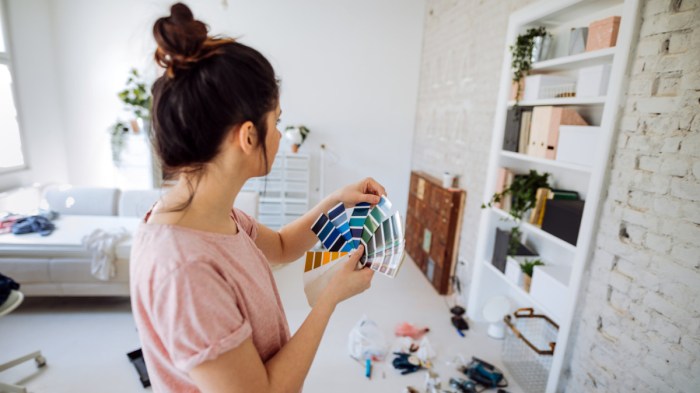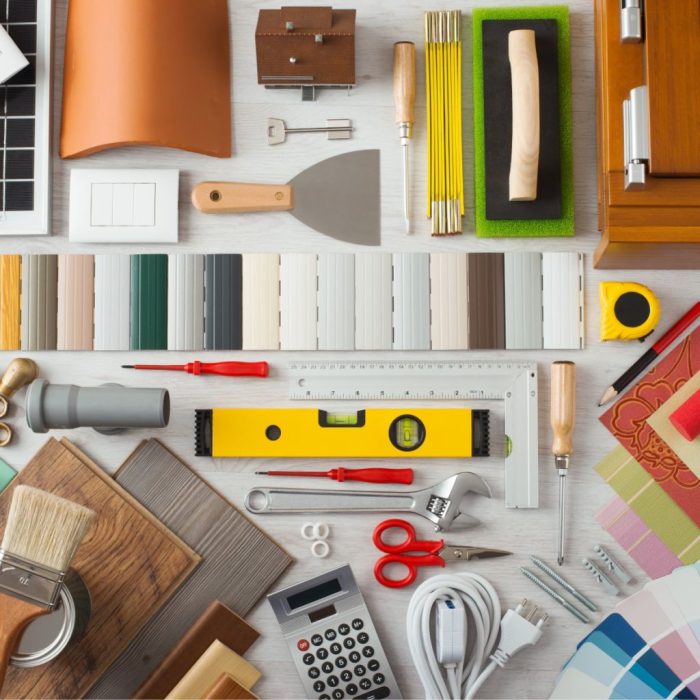DIY Home Improvement is all about revamping your space with your own personal touch. From simple projects to major renovations, this trend is taking the modern world by storm. Get ready to unleash your creativity and transform your home like never before.
Introduction to DIY Home Improvement
DIY home improvement refers to the practice of making changes or upgrades to one’s home by oneself, without hiring a professional contractor. This can include anything from painting walls to installing new fixtures or renovating entire rooms.
There are several benefits to engaging in DIY home improvement projects. For one, it can save homeowners money by eliminating labor costs. Additionally, it allows individuals to customize their living space according to their preferences and style. Moreover, DIY projects can be a great way to learn new skills and gain a sense of accomplishment.
Popularity of DIY Home Improvement
In modern times, DIY home improvement has surged in popularity due to the abundance of online tutorials and resources available. Platforms like YouTube and Pinterest have made it easier than ever for people to access step-by-step guides and inspiration for their projects. The rise of home improvement influencers and TV shows has also contributed to the trend, making DIY projects seem more achievable and appealing to a wider audience.
Common DIY Home Improvement Projects

When it comes to DIY home improvement projects, there are several popular options that can help enhance the look and functionality of your space. Whether you’re a beginner or an experienced DIYer, there’s a project out there for everyone. Here are some common DIY home improvement projects to consider:
Painting a Room
One of the easiest and most impactful DIY projects you can tackle is painting a room. With just a few supplies and some patience, you can completely transform the look and feel of a space. Here’s a beginner-friendly step-by-step guide:
- Choose your paint color and gather supplies like paint, brushes, rollers, painter’s tape, and drop cloths.
- Prepare the room by removing furniture, covering floors and fixtures, and cleaning the walls.
- Apply primer if needed, then start painting the walls with your chosen color, working from top to bottom.
- Allow the paint to dry between coats, and touch up any areas as needed.
- Remove painter’s tape, clean up any drips or spills, and put the room back together.
Tip: To make the job easier, consider using paint with built-in primer for better coverage.
Installing Shelves
Adding shelves to your walls is a great way to increase storage and display space in any room. Here’s a simple guide to help you get started:
- Determine where you want to install the shelves and measure the space to ensure a proper fit.
- Choose the type of shelves you want (floating, bracketed, etc.) and gather necessary tools like a level, drill, screws, and anchors.
- Mark the placement of the shelves on the wall, ensuring they are level and evenly spaced.
- Install brackets or mounts securely on the wall, then place the shelves on top and secure them in place.
Tip: Use anchors for heavy items or if you’re unsure about the wall’s ability to support the shelves.
Landscaping Your Yard
Improving your outdoor space can greatly enhance curb appeal and create a welcoming environment. Here’s a beginner-friendly landscaping project to consider:
- Start by assessing your yard and creating a rough sketch of your desired layout.
- Clean up the area by removing debris, weeds, and any unwanted plants.
- Add new plants, flowers, or shrubs based on your local climate and sunlight conditions.
- Consider adding mulch, rocks, or pavers to define pathways and borders.
- Regularly maintain your landscaping by watering, pruning, and weeding as needed.
Tip: Choose plants that are easy to care for and suitable for your region to ensure long-term success.
Essential Tools for DIY Home Improvement
When it comes to tackling DIY home improvement projects, having the right tools can make all the difference in the outcome of your work. From basic hand tools to power tools, here are some essential items every DIY enthusiast should have in their toolbox.
Must-Have Hand Tools
- Hammer: A versatile tool for driving nails and removing them when needed.
- Screwdriver Set: Essential for tightening or loosening screws in various sizes.
- Tape Measure: Crucial for accurate measurements and ensuring everything fits perfectly.
Importance of Safety Gear
Wearing the right safety gear is non-negotiable when working on DIY projects. Protect yourself with:
- Gloves: To protect your hands from cuts, splinters, and sharp edges.
- Goggles: Shield your eyes from debris, dust, and any potential hazards.
Recommended Power Tools
- Power Drill: Perfect for drilling holes, driving screws, and other tasks that require power.
- Circular Saw: Ideal for making straight cuts in wood, laminate, or plastic.
- Jigsaw: Great for cutting curves, circles, and intricate shapes in various materials.
Budget-Friendly DIY Home Improvement Ideas

Improving your home doesn’t have to cost a fortune. With some creativity and resourcefulness, you can tackle DIY projects on a budget and still achieve great results. Here are some ideas to help you spruce up your space without breaking the bank.
Repurposing Items for DIY Projects
One of the best ways to save money on home improvement projects is by repurposing items you already have or finding inexpensive items to transform. Here are some tips for repurposing items for DIY projects:
- Turn old wooden crates into stylish shelves.
- Repaint and distress old furniture for a vintage look.
- Use mason jars as stylish storage containers.
- Transform old windows into decorative mirrors.
Prioritizing DIY Projects Based on Budget Constraints, DIY Home Improvement
When working on a budget, it’s important to prioritize your DIY projects to make the most impact with the resources you have. Here are some tips for prioritizing DIY projects based on budget constraints:
- Start with projects that have the most significant impact on your daily life, such as fixing leaks or repairing broken fixtures.
- Focus on projects that add value to your home, like updating the kitchen or bathroom.
- Consider the cost of materials and tools needed for each project and prioritize based on what you can afford.
